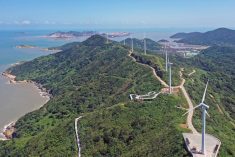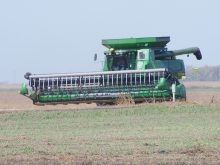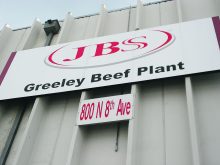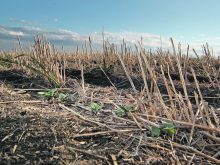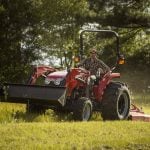Cummins, an American firm known for its diesel engines, is shifting its investments toward the green economy — and green fertilizer.
In early April, U.S. president Joe Biden visited a Cummins manufacturing plant in Fridley, Minnesota.
Biden toured the plant and saw what Cummins will soon make at the facility.
“I am delighted that we will have the chance to show President Biden the innovative work we are doing at our Fridley plant,” said Jennifer Rumsey, Cummins president and chief executive officer.
“In just a few weeks, we will begin manufacturing one of the key pieces of technology for green hydrogen production that will help decarbonize our economy and drive the clean energy transition — the electrolyzer.”
Read Also
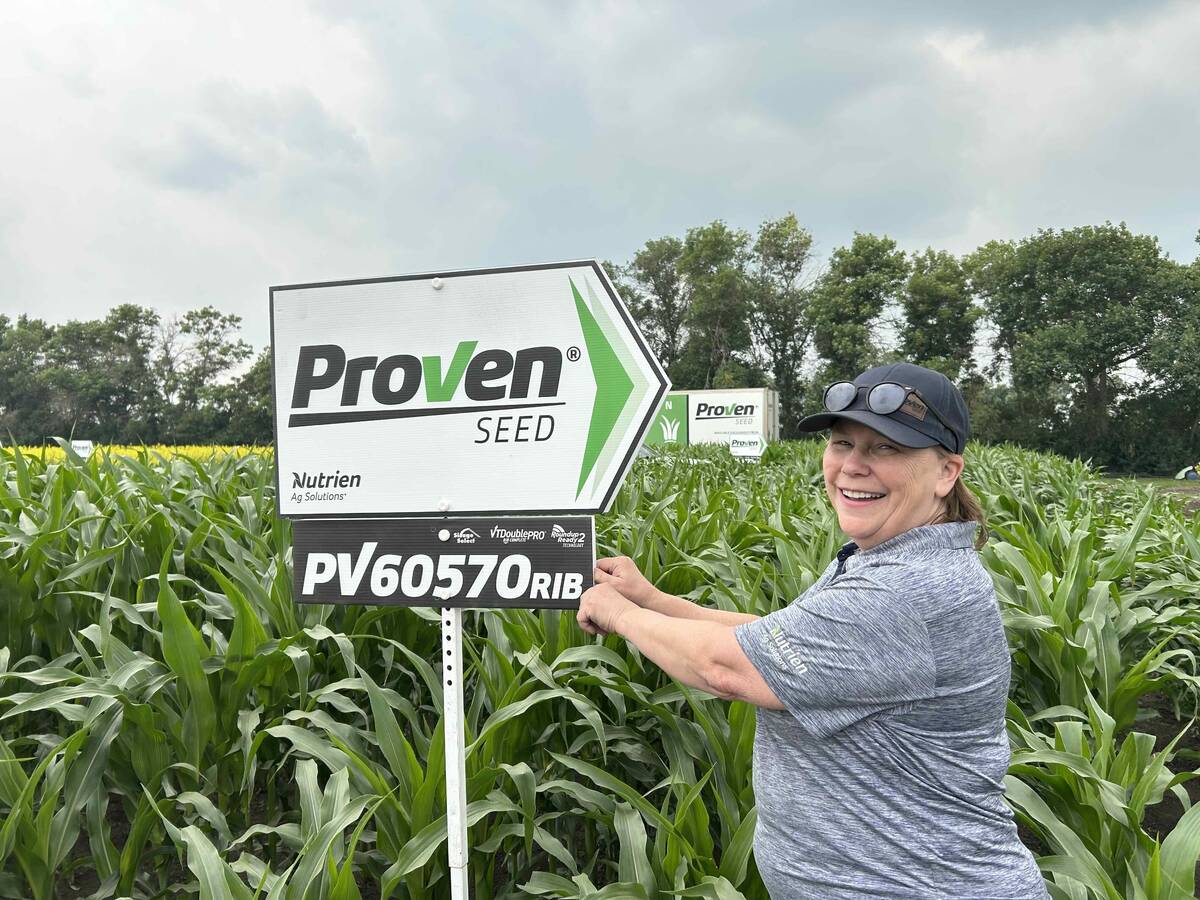
Ag In Motion 2025 site hub of activity
day before Ag in Motion preview.
Making electrolyzers differs from Cummins’ core business of diesel engines, but it could become a significant source of company revenue. Electrolyzers are devices that use electricity to break the bond between hydrogen and oxygen in water, separating water into hydrogen and oxygen.
“Electrolyzers can range in size from small, appliance-size equipment… to large-scale, central production facilities that could be tied directly to renewable or other non-greenhouse-gas-emitting forms of electricity production,” says the U.S. Department of Energy.
Cummins’ investment in electrolyzers is part of a bigger shift in the fertilizer industry.
Fertilizer manufacturers are under pressure to cut greenhouse gas emissions because the sector produces an immense amount of carbon dioxide.
“Typically, ammonia is produced using natural gas. You take natural gas through a process called steam-methane reforming, essentially to get to the hydrogen,” said Mike Reese, renewable energy director at the West Central Research and Outreach Center, a University of Minnesota facility in Morris, Minn.
“That’s performed (at) world-scale plants… (and) one percent of global greenhouse gas emissions are attributable to ammonia nitrogen fertilizer production. I think it’s closer to two percent.”
An Ontario company is hoping to take advantage of the changes happening in the fertilizer industry.
FuelPositive of Waterloo, Ont., has installed a pilot plant at a farm in Sperling, Man., where it’s testing technology that converts renewable electricity into anhydrous ammonia fertilizer.
Electrolyzers are critical for the process because it requires a lot of electricity to separate the hydrogen from water molecules.
“The electrolyzer is the largest contributor to the system’s operating expenses and capital expenses, representing over 80 percent of the system’s costs,” FuelPositive says on its website. “Its efficient operation has the greatest impact to the performance of the overall system.”
FuelPositive’s business model is centred on selling the technology to farmers.
“We’re direct to consumer… saying the end user is the farmer. And the end user should have control over that input, entirely,” said FuelPositive chief executive officer Ian Clifford.
“Our model is completely disrupting to the existing… ammonia manufacturing and distribution (model).”
For that to happen, FuelPositive and the hundreds of other companies planning to produce green hydrogen and green ammonia will need a steady supply of electrolyzers.
“There’s all these people looking at this (green ammonia), but where are these electrolyzers going to come from?” said Chris Mancinelli, a chemical engineer with Casale, a Swiss engineering company that designs ammonia plants.
“The capacities for the electrolyzers (to produce hydrogen) are behind some of the ambitions (for) the projects going on.”
Cummins is hoping to fill that void.
It will manufacture electrolyzers in Minnesota, Europe, Asia and possibly in Canada.
The company is expanding its electrolyzer manufacturing capacity at its Belgium factory and has “added space to its Mississauga, Canada, site,” Cummins said last fall.
It’s also building new electrolyzer factories in Spain and China.






